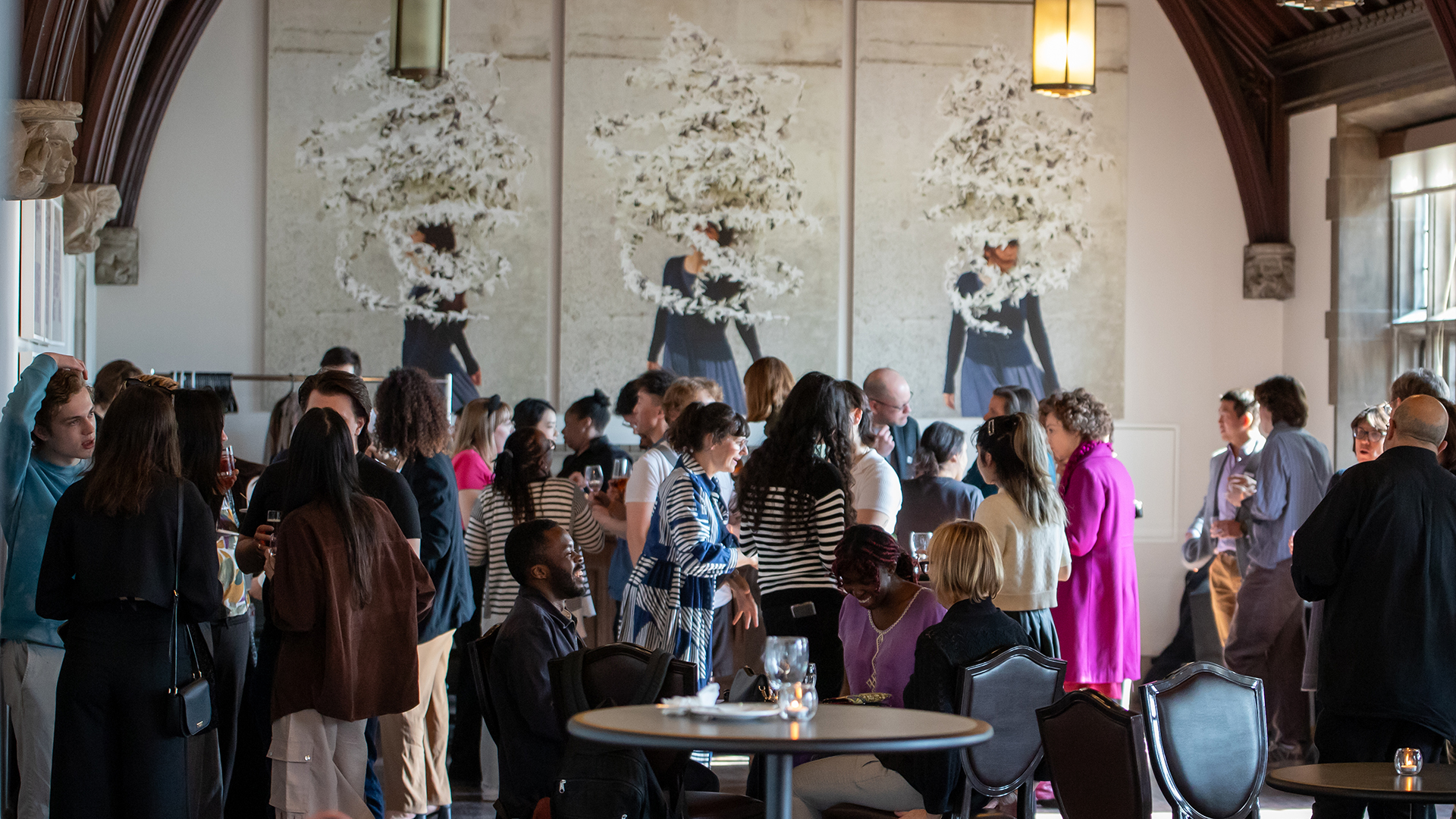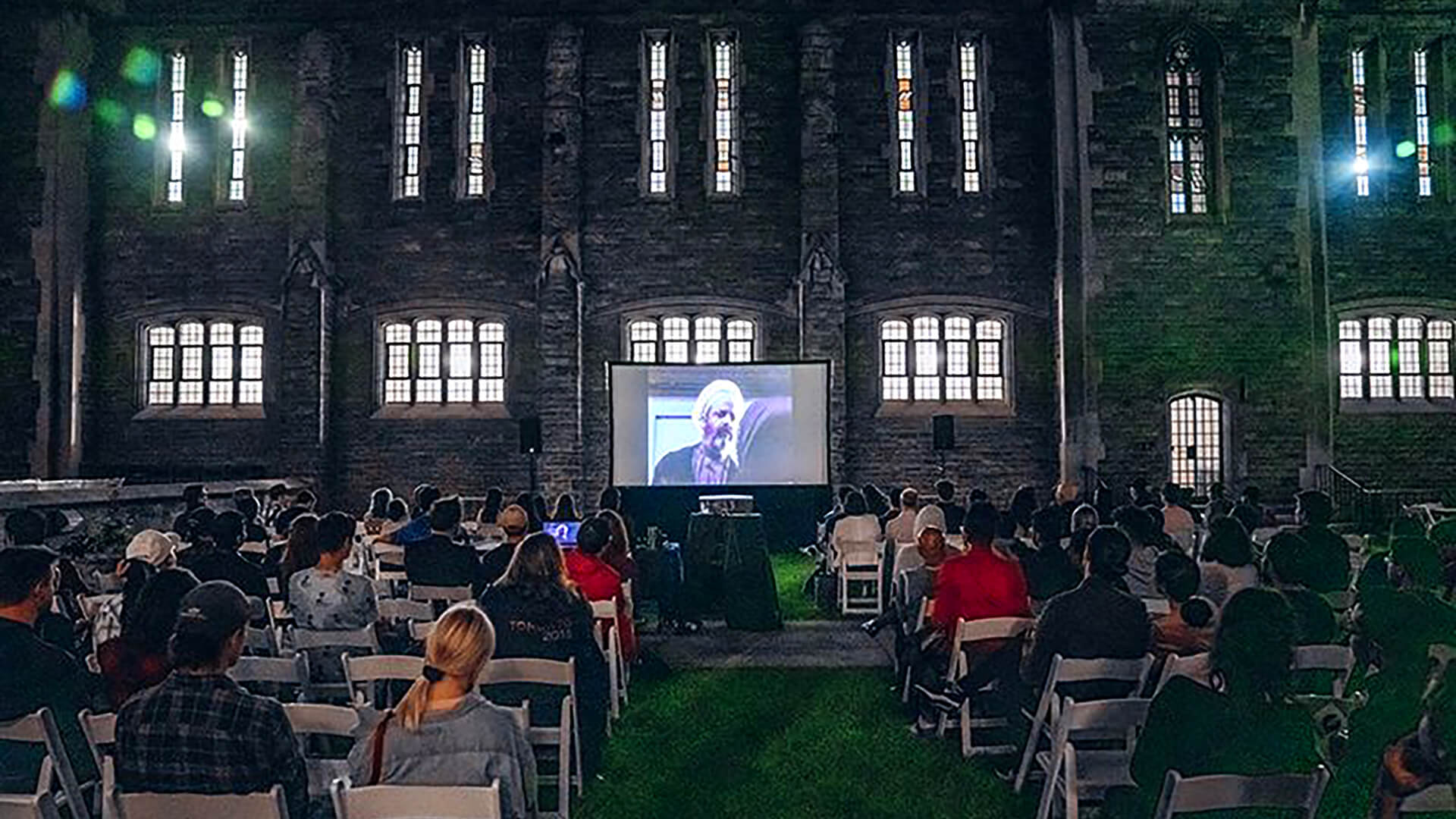Hart House and The Art Museum at the University of Toronto have reimagined Hart House Commons through a hugely inventive public art project, the ‘Tree Protection Zone.’ This unique outdoor space now showcases some stunning Indigenous art with a profound environmental message.
As construction on the University of Toronto’s Landmark Initiative continues around Hart House Commons, a number of large tree-protection hoardings have inspired a public art project entitled the ‘Tree Protection Zone’ (TPZ).
From September 2021 to Spring/Summer 2022, this project will have a wondrous new focus: specially commissioned, mural-sized works by eight Indigenous artists and their collaborators. These remarkable artworks consider the preservation of life, water and kin, and how each is inextricably linked to the protection of trees. They offer a vital opportunity to engage students and the wider public in essential conversations about the land and its people.
In so many ways, this initiative is emblematic of Hart House’s enduring aspirations: community building, amplifying under-served voices and highlighting global concerns, such as climate change and protecting the earth, all while celebrating artistic endeavors. This project also stands as a wonderful example of partnerships across campus.

About the photo: Hart House Commons in May of 2021, blank canvases awaiting The ‘Tree Protection Zone’ a showcase of Indigenous art.
“This major art in public space project, organized by the Art Museum, introduces to the campus of the University of Toronto an as of yet rarely acknowledged, but urgent sense of long-lived place: amongst the ancient trees and cared for landscapes, and amidst the short span of settler history as configured by the surrounding historic buildings, the curators and artists’ works remind us of the intertwining of human and the planet’s life, drawing out buried stories and standing both with and as protectors of the land,” says Barbara Fischer, Executive Director/Chief Curator, Art Museum at The University of Toronto.
“The role of public visual art is such a powerful one,” says John Monahan, Warden of Hart House, who first approached U of T partners about reimagining the tree hoardings in a way that would signal the future Indigenous Landscape Project – an offshoot of the Landmark Initiative – to be constructed on the Commons in Spring/Summer 2022.
“The presence of the Tree Protection Zone installation in the city, and on the U of T downtown campus, is an important visual declaration about the past, present and future of this land and the Indigenous peoples who have been stewarding it for generations. Hart House is proud to be part of this inspiring initiative,” he adds.
This installation is an important visual declaration about the past, present and future of this land and the Indigenous peoples who have been stewarding it for generations. Hart House is proud to be part of this inspiring initiative.
John Monahan, Warden of Hart House
Collaborations Highlight Indigenous Perspectives and Knowledge
The artists who participated in the TPZ were supported by Student Assistants and emerging artists who benefitted from the unique opportunity to closely engage with the artists’ processes, vision and knowledge.

About the photo: This is the hoarding that has been entirely reimagined by Susan Blight, an Anishnaabe artist from Couchiching First Nation. This piece is entitled “6 kilometres and 8,000 years long.”
Working with the TPZ curatorial team, the Assistants applied a variety of creative processes as they helped to bring the artists’ designs to life. The initiative fostered collaborations involving artists, family, students and community members of diverse backgrounds that foreground Indigenous perspectives and knowledge.
Curated by Mik Migwans, Assistant Professor and Curator at AMUT, and Maria Hupfield, Assistant Professor Indigenous Digital Arts and Performance, the TPZ features eight invited artists: Susan Blight, Carrie Hill, Que Rock, Taqralik Patridge and Nils Ailo Utsi, Christi Belcourt and Isaac Murdoch (of the Onaman Collective) and Shuvinai Ashoona.

About the photo: Haudenosaunee artist Carrie Hill in front of the hoarding that she has reimagined using traditional basket-weaving techniques that she was taught by her aunt. This piece is entitled “Tewarontanonhna (We guard the tree).”
Each artist used the hoardings as a support structure for their work in diverse media. They employed traditional street art techniques and a variety of other applications to turn Hart House Commons into a celebration of the garden and trees; the buried waterway (Taddle Creek), which remains active underground; and the community that is centered here.
“By drawing attention to the tree protection zones found on constructions sites, this Indigenous-led public art project signals U of T’s support of work by artists who prioritize critical accountability to place, land and peoples, as part of the vibrant energy of the city,” says Maria Hupfield, TPZ co-curator.
The TPZ was made possible by Presenting Partners, including the Office of the Vice-President, Operations and Real Estate Partnerships, University of Toronto; The Art Museum at the University of Toronto; Hart House; the Indigenous Student Services; and the Office of Indigenous Initiatives at U of T. Additional support was provided by the City of Toronto’s Arts and Culture Grant, the Ministry of Colleges and Universities and U of T’s Postsecondary Education Fund for Aboriginal Learners.
Read more about the TPZ.





